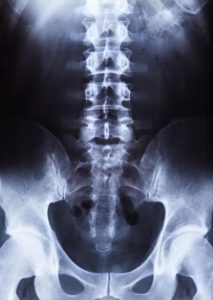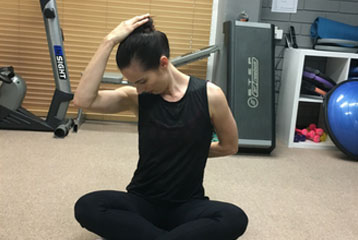On a daily basis I have patients come into the clinic with low back pain. The majority of patients have heard horror stories about someone else who has back pain and are usually terrified that their back is permanently damaged beyond repair.
In most cases they come with scans that they have been referred for (usually an x-ray, MRI or CT). In the majority of cases these scans will show findings such as disc bulges/protrusions, end plate narrowing, osteophytes, degeneration, and in some cases fusion of joints. All of these things sound extremely scary! But the truth is in 85% of cases these findings are IRRELEVANT!
The Facts
Research is consistently showing that in the majority of cases, (over 85%), the cause of a person’s low back pain cannot be attributed to the spinal abnormalities shown on a scan. In fact findings such as disc protrusions, facet degeneration, end plate narrowing and osteophytes are actually a normal part of the aging process. Research has been conducted which shows that scans taken on people with no low back pain or history of low back pain also show these findings. Therefore there is a large portion of the population walking around with disc protrusions and significant degeneration in their backs and they have NO PAIN!
This means that in the majority of cases, a scan will not change the management of your low back pain.

So what causes the pain?
There are many structures in the back that can potentially cause low back pain. In my experience generally its overactivity of big muscle groups, muscle strains and ligament injury that cause pain. Generally there is muscle spasm and tightness around an injured joint which compresses the joint and causes pain. Swelling in an area can also cause nerve irritation which can refer pain into the groin, buttock and leg.
Are scans useful?
There are a group of patients for which scans are useful. These are patients that present with more sinister pathology that is long lasting (longer than 6 weeks). These people will also have symptoms such as muscle weakness, foot drop, change to their bladder and bowel function, pins and needles in their saddle region, and reduced reflexes. In these cases scans play an important role in diagnosis and referral to a specialist may be required.
The Good News!
The majority of low back pain cases can be successfully treated with Physiotherapy. If it is the first time you’ve had low back pain and you have had it for less than 6 weeks, your pain is usually resolved (with physio) in less than 6-12 weeks. In most cases, if the treatment plan is followed (strengthening exercises are completed), the low back pain will not re-occur. The good news about this is that you have control over your recovery and the pain is not ongoing!
So if you or someone you care about is experiencing low back pain make sure you get them to come in for a check with a Physiotherapist. If you have a scan you would like explained feel free to book a consultation today with one of our lovely staff, who will happily answer your questions and address your concerns.
We look forward to helping you live painfree!
– Jaquie Goldsack, Physiotherapist
If you would like to make an appointment with Jaquie, give one of our friendly staff a call on 4724 0768 or follow the link to book online. https://physionorth.bookings.pracsuite.com


